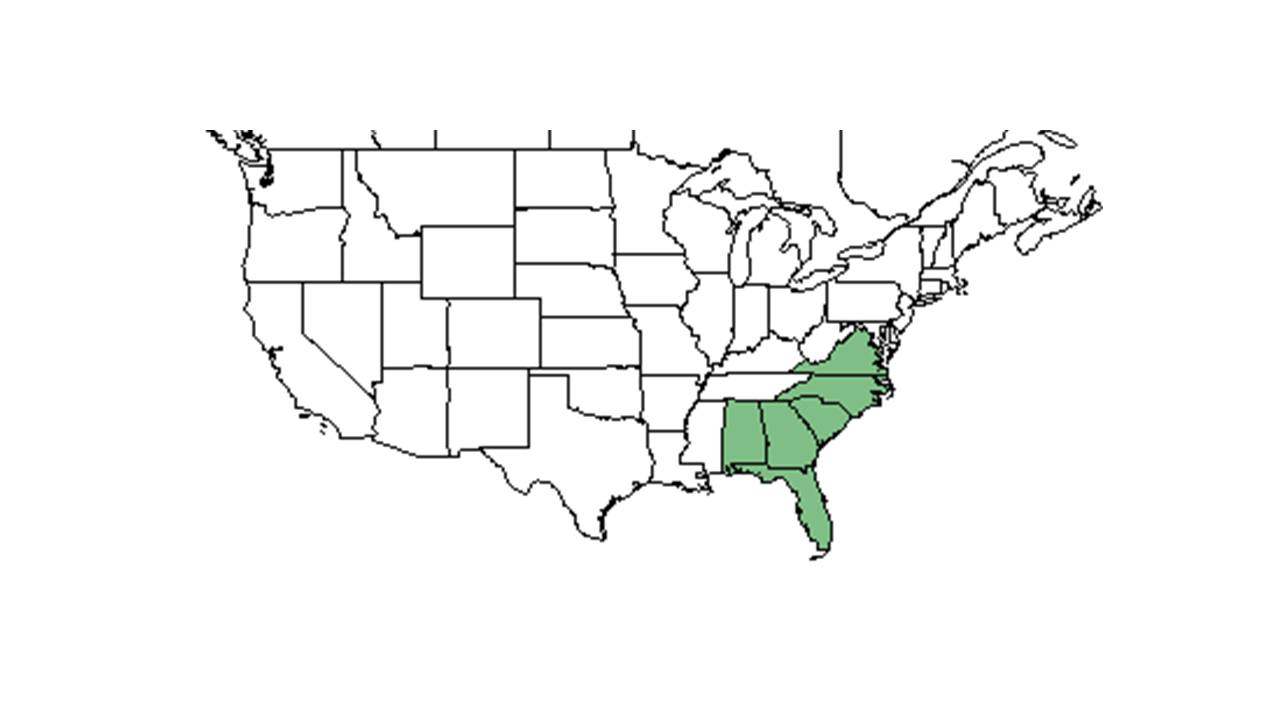Difference between revisions of "Pediomelum canescens"
(Created page with "{{italic title}} <!-- Get the taxonomy information from the NRCS Plants database --> {{taxobox | name = Pediomelum canescens | image = Insert.jpg | image_caption = | regnum =...") |
|||
| Line 22: | Line 22: | ||
==Ecology== | ==Ecology== | ||
===Habitat=== <!--Natural communities, human disturbed habitats, topography, hydrology, soils, light, fire regime requirements for removal of competition, etc.--> | ===Habitat=== <!--Natural communities, human disturbed habitats, topography, hydrology, soils, light, fire regime requirements for removal of competition, etc.--> | ||
| + | “It occurs in sandy areas of the Coastal Plain from North Carolina to Florida and Alabama.”(Graham 1941). | ||
===Phenology=== <!--Timing off flowering, fruiting, seed dispersal, and environmental triggers. Cite PanFlora website if appropriate: http://www.gilnelson.com/PanFlora/ --> | ===Phenology=== <!--Timing off flowering, fruiting, seed dispersal, and environmental triggers. Cite PanFlora website if appropriate: http://www.gilnelson.com/PanFlora/ --> | ||
| + | “A widely branching perennial herb 1 to 3 feet tall, with loose spikes of dark-blue flowers and 1 to 3 foliolate laves (Graham 1941) | ||
===Seed dispersal=== | ===Seed dispersal=== | ||
===Seed bank and germination=== | ===Seed bank and germination=== | ||
| Line 28: | Line 30: | ||
===Pollination=== | ===Pollination=== | ||
===Use by animals=== <!--Herbivory, granivory, insect hosting, etc.--> | ===Use by animals=== <!--Herbivory, granivory, insect hosting, etc.--> | ||
| + | “The seeds have been found in stomachs of the bobwhite.”(Graham 1941) Fire ants are not interested in P. canescens seeds (Cumberland et al. 2013). | ||
===Diseases and parasites=== | ===Diseases and parasites=== | ||
==Conservation and Management== | ==Conservation and Management== | ||
==Cultivation and restoration== | ==Cultivation and restoration== | ||
| + | ==Photo Gallery== | ||
==References and notes== | ==References and notes== | ||
| − | + | Cumberland, M. S. and L. K. Kirkman (2013). "The effects of the red imported fire ant on seed fate in the longleaf pine ecosystem." Plant Ecology 214: 717-724. | |
| + | |||
| + | Graham, E. H. (1941). Legumes for erosion control and wildlife. Washington, USDA | ||
Revision as of 19:28, 11 June 2015
| Pediomelum canescens | |
|---|---|

| |
| Scientific classification | |
| Kingdom: | Plantae |
| Division: | Magnoliophyta - Flowering plants |
| Class: | Magnoliopsida – Dicotyledons |
| Order: | Fabales |
| Family: | Fabaceae ⁄ Leguminosae |
| Genus: | Pediomelum |
| Species: | P. canescens |
| Binomial name | |
| Pediomelum canescens (Michx.) Rydb. | |

| |
| Natural range of Pediomelum canescens from USDA NRCS Plants Database. | |
Contents
Description
Distribution
Ecology
Habitat
“It occurs in sandy areas of the Coastal Plain from North Carolina to Florida and Alabama.”(Graham 1941).
Phenology
“A widely branching perennial herb 1 to 3 feet tall, with loose spikes of dark-blue flowers and 1 to 3 foliolate laves (Graham 1941)
Seed dispersal
Seed bank and germination
Fire ecology
Pollination
Use by animals
“The seeds have been found in stomachs of the bobwhite.”(Graham 1941) Fire ants are not interested in P. canescens seeds (Cumberland et al. 2013).
Diseases and parasites
Conservation and Management
Cultivation and restoration
Photo Gallery
References and notes
Cumberland, M. S. and L. K. Kirkman (2013). "The effects of the red imported fire ant on seed fate in the longleaf pine ecosystem." Plant Ecology 214: 717-724.
Graham, E. H. (1941). Legumes for erosion control and wildlife. Washington, USDA